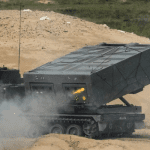The Pentagon and the US Congress are considering a modification that might increase the range of some current weapons by up to 20% by employing more powerful propellants and lighter warheads.
The Senate published bill wording last week earmarking at least $13 million to develop, expand, and manufacture chemical compounds known as “energetics” that can be used to drive missiles or replace the explosive material in warheads.
The law, which is still awaiting final approval in Congress, would initiate a Pentagon effort to try to extend the range of existing weapons by utilizing chemicals such as China Lake Compound #20, often known as CL-20, according to aides and people familiar with the idea.
CL-20, which was developed by a federal laboratory in California in the 1980s, is one of the most talked chemical compounds under consideration, according to a senior defense official. Congress has been drawn to studies, such as one published in 2021, that claimed that repowering a rocket with CL-20, together with other improvements, might increase its range by around 20%.
A paper by the Energetics Technology Center said new energetic materials give a 400-pound bomb “the same lethality as a current 1000-pound bomb,” adding China makes “CL-20 on an industrial scale and built it into weapons systems.”
Northrop Grumman Corp (NOC.N) is one of the main makers of CL-20 in the United States. The other main rocket motor maker is Aerojet Rocketdyne which was purchased last week by L3Harris Technologies.
Although a fraction of the $886 billion defense bill making its way through Congress, the funding starts a process that could ultimately lead to billions of dollars of new spending on munitions.
The “distance in the Indo-Pacific and sheer size of (China’s) Navy means the U.S. needs more ship-killing missiles that can reach distant targets,” Representative Mike Gallagher told Reuters. China views the U.S. in the Pacific as a threat, ramping up its own military presence in response.
The Senate earmarked funds would be used to establish an office for energetic materials within the Department of Defense answering to the Deputy Secretary of Defense Kathleen Hicks, according to the legislation.
The office would be a coordinating body across the Army, Navy and Air Force to cut through institutional red tape.
Iain Overton, executive director with the nonprofit Action on Armed Violence, said the race to tweak already lethal weapons was not progress.
The House version of the annual defense bill requires the Pentagon to run a CL-20 pilot program that switches out either the explosive or propellant in three existing weapons.














